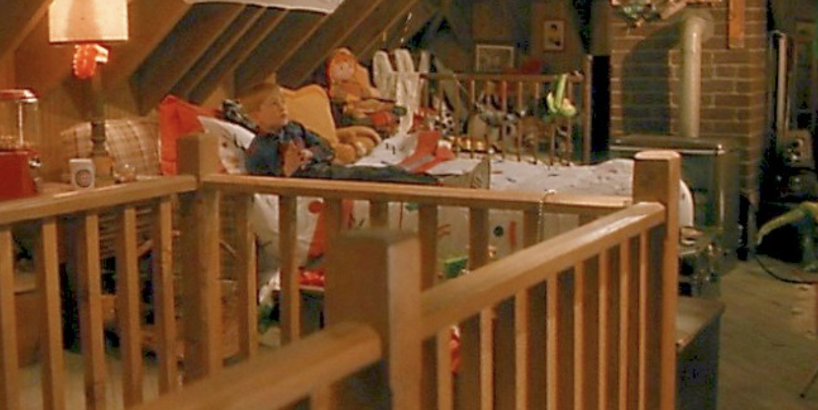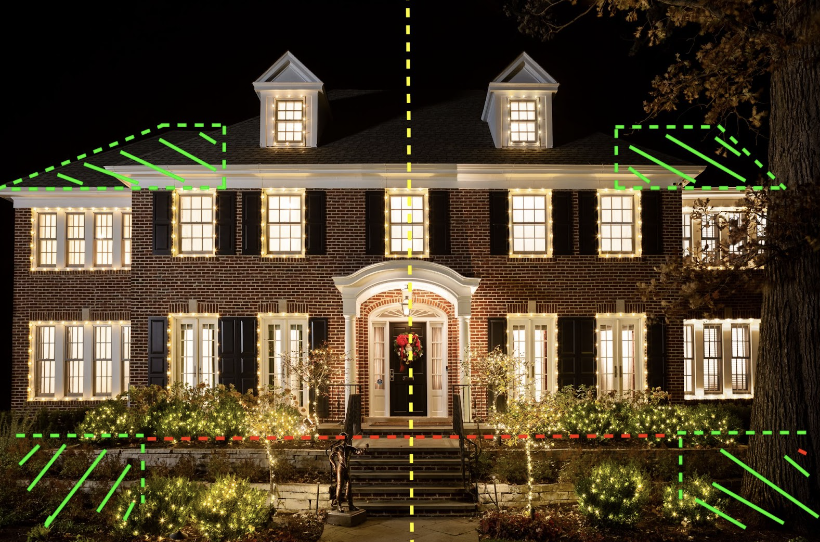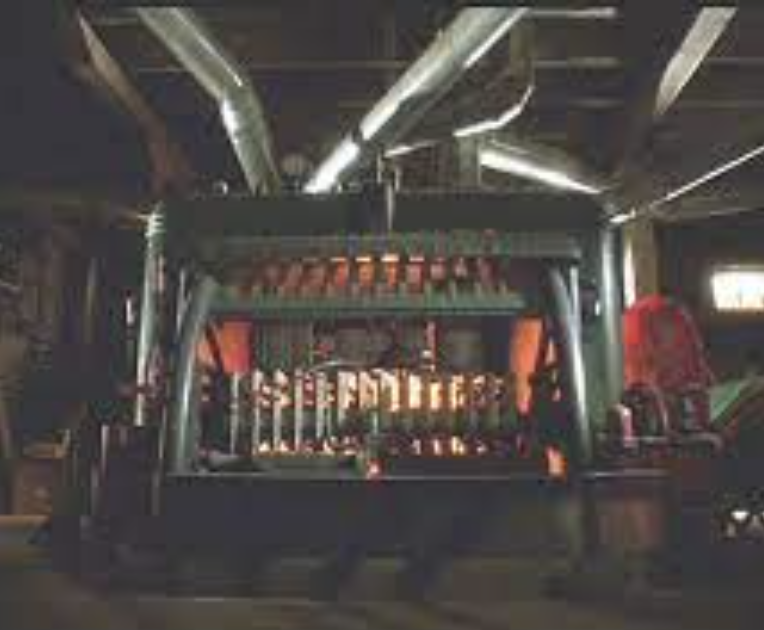The famous McCallister house in Chicago has an energy waste problem. See why Kevin’s house is so cold—and the 3 best ways to fix it.
Quick question: Does that house look familiar? If you’re not sure, think Christmas…a couple of robbers…and a kid left home by himself…
Yep, this house is one of the famous movie houses in Chicago, the house of the McCallister family in a movie we’re going to call Home By Myself (wink, wink).
We’re going to take a quick tour of this house. Why? Well, the robbers may be long gone from this house, but it’s still got a major problem: It’s wasting a lot of energy. And that makes it the perfect test case for a home upgrade plan from Sealed. (Fixing energy waste in homes and making them feel amazing is what we do.)
Let’s do a quick custom home scope on the McCallister house today—and find the one solution that would have made Kevin’s attic feel a whole lot better.
The major features of Kevin McCallister’s house
We’ll start with some basic facts.
Built in 1920, the McCallister home at 671 Lincoln Avenue in Winnetka is a Georgian-style colonial home with 3 floors (if you include the attic). Like many homes, the McCallisters’ home changed in finish and design since it was featured in the film 32 years ago, but it retained its major feature: Symmetry—which is what Georgian colonials are best known for!
Notice how you can split it right down the middle? Keep that perfect Georgian symmetry in mind. It’ll be important later in our home scope, but, for now, let’s look at some details.
The details of Kevin McCallister’s house
We need to talk about the attic that nearly spelled the end of our hero Kevin.
A quick refresher: In Home By Myself, Kevin is iconically left home alone (yes, another wink) after being banished to the attic. What’s not clear from the movie is the exact structure of the attic, but from what we can see, we can assume the attic was a fully unfinished space that spanned the entirety of the home’s footprint:

See the unfinished and uninsulated ceiling on the upper left?
What does all this mean?
Well, in brief: Poor Kevin was probably pretty cold up in that attic when he got stuck there three decades ago.
That’s because he was outside of the home’s thermal envelope (a fancy term for anything in your home that separates the unconditioned air outside from the conditioned air inside).
When an attic is unfinished with flooring—like Kevin McCallister’s house here— it’s most common to see insulation placed or densely packed beneath the floorboards, which helps keep the downstairs warm but doesn’t do much to keep the attic comfortable.
(The McCallisters do have heating equipment in the attic, but that heat didn’t help Kevin much, since it went right up through the roof without proper insulation! Clearly, energy efficiency was not top of mind.)
(By the way, the situation at 671 Lincoln Avenue has likely changed since the movie was filmed. New photos from publically-available records show that subsequent owners of this house have likely refinished and reinsulated their home—it’s probably a lot more comfortable in the attic now.)
Here’s a diagram of how we suspect the house is finished now:

First, note the symmetry mentioned before—the house is essentially exactly the same on both sides of the yellow line.
From that symmetry, we can infer that the green spaces on either side of the home are left unfinished. At the top of the home, these spaces are likely closets—often known as “kneewall” closets. (Many homeowners make use of these spaces for storage, cedar closets or even additional HVAC.)
Meanwhile, the spaces marked in green at the bottom of the home are likely crawlspaces that might also contain HVAC or plumbing.
The rest of the home, at the lower level, is almost certainly an unfinished basement.
And it also contains this thing:

Yes! It’s the furnace so many of us feared and ran from in our own homes! The official name for it is a coal-fired gravity hot air furnace—or, as we often call it, an “octopus furnace.” This furnace is pretty rare in homes today (and it’s definitely not the best or most efficient way to heat your home).
One final thing to notice before we make our recommendations: Because of the age of this home, the rim joist—the place where the foundation of the home meets the walls—is uninsulated, which allows a lot of unwanted air exchange with the outside. We’ll definitely need to fix that!
How to fix Kevin’s house
Okay, we’ve got enough to make some quality suggestions. Let’s see what needs to be done urgently (and what isn’t so urgent)!
Here’s what Kevin’s house definitely needs:
- Fix the top of the home by fully insulating the attic.
Most of the heat in Kevin’s house is escaping right through the attic! We can fix that problem by insulating the attic (and any other unfinished spaces at the top of the home) with closed-cell foam.
- Insulating and sealing the rim joist.
This is a no-brainer. The rim joist in this house is exposed to the interior, so it would be easy to apply closed-cell foam—and prevent cold from seeping into the home through the foundation. (Rim joist solutions tend to be easy to apply, low cost, and high effect—they’re often the most cost-effective work you can complete in homes.)
- Upgrade the HVAC.
If this home is still heating with an octopus furnace, we should replace that system altogether! Because the house doesn’t have ductwork, our recommendation would be a new mini-split air source heat pump—which would heat and cool the home efficiently.
Here’s what Kevin’s house might need:
- Extend the thermal envelope of the house to include any crawlspaces.
Crawlspaces aren’t visible in the movie—there may not be any! But if there are crawlspaces in the house, it’s possible that it might make sense to insulate them (it just depends on what’s in those spaces).
Here’s what Kevin’s house probably doesn’t need:
- New “dense packing” insulation in the walls.
It sometimes makes sense to add dense packing insulation to the walls of a house. But this kind of insulation isn’t as cost-effective as some of the solutions we’ve already recommended above. And in this house, adding dense packing insulation to the walls could be very inconvenient (because of the siding, we’d need to insulate from the inside of the home, which means repainting the home—top to bottom!).
Want an expert home scope of your own?
If you’re as miserable in your house as Kevin was in his attic, we’ve got good news: Your house doesn’t have to be famous to be eligible for a custom home upgrade plan that will make it feel amazing.
In fact, you can find out if you’re eligible for a custom home scope right now. It only takes two minutes:
If your house qualifies, you’ll get a completely custom plan from experts with years of experience in air circulation and climate control. We don’t do cookie-cutter solutions, either. You’ll get a plan that’s tailored to your situation and the unique needs of your home. (We even do our best to use the type of materials you’d like to use!)
We’ll put together the plan, hire expert contractors, and make sure that everything gets done right. All you need to do? Enjoy a house that feels amazing.
Love energy efficiency deep-dives on older houses? Check out the following: